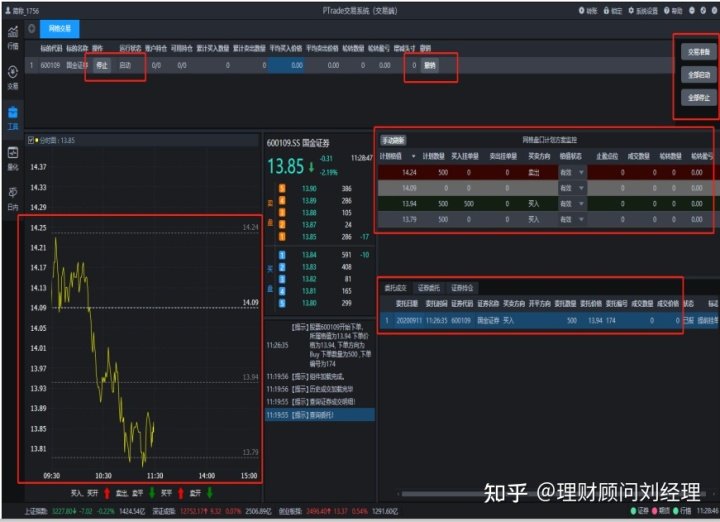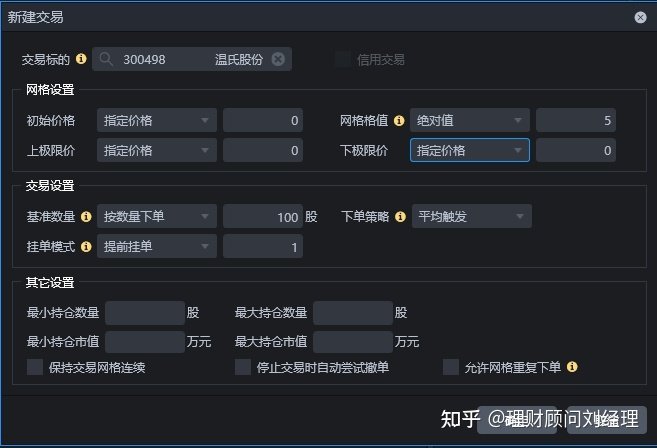What is Grid Trading?
Grid trading is a combined trading strategy that sells high and buys low under volatile market conditions. According to the price range you set, the ratio/amount of increase and decrease, and the number of orders, the system will monitor the market price based on the current benchmark price. When the target price condition is met, the order will be automatically submitted, and the trigger price will be updated to the benchmark price to generate the next buying and selling price, and so on.
Grid trading has the characteristics of small drawdown and low risk. Due to the characteristics of selling high and buying low in grid trading, there are certain risks in the unilateral market. If the stock market suddenly rises or falls, it may be short before the bull market or in a long-term floating loss state. Because our stock market has been in the pattern of bottom shock and consolidation all year round, this method is very maneuverable.

By setting a trading range, buy when it falls, and sell when it rises, first divide the funds into n shares, and set a percentage (for example, 3%). If the stock price falls by 3%, you can buy one share, and if it rises by 3%, you can sell one share. In this way, the price difference can be earned by repeated trading in a mechanized manner.
Grid trading is applicable to stocks, ETFs, convertible bonds and other varieties. Grid trading will frequently buy and sell, and the relative transaction cost will be higher. Stocks and ETFs have a minimum charge of 5 yuan, and convertible bonds have no minimum charge, which is more suitable for the trading strategy of selling high and buying low.
Brokers’ own trading apps generally support grid trading. I have summarized two more practical tools for your reference!
1. Flush Grid Trading
Flush supports cloud conditional orders. The types currently supported include grid trading, stock price conditions, daily rise and fall, stop profit and stop loss, etc.
Its advantage is that after the cloud condition sheet is set successfully, the condition sheet on the cloud server is still valid because it is running on the cloud, the device is disconnected from the network, the power is cut off, and the software is not turned on; In terms of delivery, it is faster and more efficient. It is suitable for users who trade on the mobile terminal, and do not need to monitor the market in real time.
2. ptrade quantitative trading software
Applicable scenarios: People who have a certain technical foundation and trading experience, and use stock volatility to earn price differences. There is a certain amount of attention to stock selection, range price setting, and range rise and fall.


The advantage is that the transaction data can be backtested,

There are various forms of grid values,

It can support credit account login, suitable for users who trade on the computer side, with diversified functions!
If you have other questions, you can leave a message~~